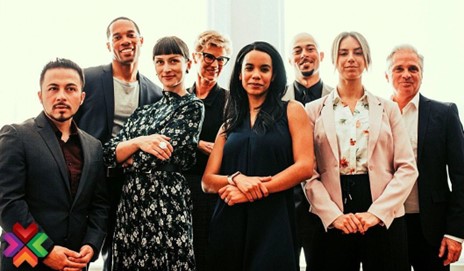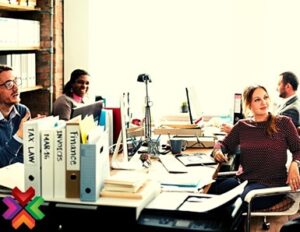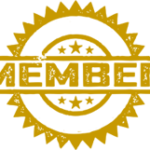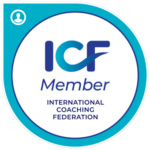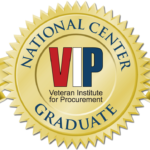The Importance of Diversity in the C-Suite
In our last blog “Can Diversity Be a Strategic Advantage to Organizations?” (read the blog here), we discussed some of the challenges of diversity. One of those challenges was getting everyone involved in diversity efforts, most importantly, the C-Suite.
When it comes to the importance of diversity in the C-Suite, there are a few key points to keep in mind. First, having a diverse group of leaders can help educate the rest of the company on the importance of inclusion and diversity. Secondly, a more diverse leadership can help bring different perspectives and solutions to problems, which can ultimately lead to better company performance. Finally, as more companies focus on diversity and inclusion, it is important for leaders in the C-suite to set an example and be vocal advocates for these values.
Women make up 56 percent of front-line employees but only 29 percent of the C-suite, according to the Gartner 2021 Leadership Progression and Diversity Survey, which queried 3,500 employees across 24 industries on the topic in February 2021. Black and Indigenous people and other people of color (BIPOC) make up 31 percent of front-line workers, but only 17 percent of the C-suite (www.shrm.org).
It’s critically important that the C-Suite reflects the diversity of the customers and employees it serves. The makeup of a company’s leadership affects all aspects of its business, from the products it creates to the way it communicates with customers. That’s why it’s important for businesses to not only recruit a diverse range of employees, but also to educate their leaders about the importance of diversity. Too often, people in positions of power are unaware of the benefits that come from having a more diverse workplace. As a result, they make decisions that don’t take into account the needs and wants of all their customers.

It is no secret that businesses with more diverse leadership teams perform better financially. A study by McKinsey & Company found that organizations with the most racially and ethnically diverse executive teams were 35% more likely to have financial returns above their national industry medians. The same study also found that gender-diverse executive teams were 15% more likely to have financial returns above their national industry medians.
So, what’s stopping businesses from having more diverse executive teams? One of the biggest factors is a lack of education among company leaders about the importance of diversity. Too often, decision-makers rely on their own personal experiences and biases when making hiring decisions. As a result, they tend to hire people who are similar to them, which limits diversity in the workplace.
There is a growing body of research that suggests that a more diverse C-suite can lead to a more successful company. Having leaders from different backgrounds can help educate the rest of the company on different cultures, values, and ways of thinking. Additionally, a diverse C-suite can provide a more accurate representation of the company’s customer base and help make better decisions when it comes to product development and marketing.
It’s not just important for businesses to have diversity in their executive ranks; it’s also important for them to educate their leaders on the importance of diversity. Too often, companies promote people into leadership positions without giving them any training on how to be effective leaders. A recent study by the Harvard Business School found that only 25 percent of companies offer any type of diversity training for their managers. This is unacceptable, and XcelMil can help with the other 75 percent.
Why Company Leaders Need Diversity Education
Leaders in any field should be aware of the value that diversity brings to an organization. A diverse workplace is one where employees from different backgrounds, races, genders, and religions can come together and share their unique perspectives. This can lead to better problem solving and a more innovative company culture.
Unfortunately, many leaders are not aware of the importance of diversity or how to create a more diverse workplace. This is where diversity education comes in. Diversity education teaches leaders about the benefits of diversity and how to create an inclusive environment where all employees feel welcome and valued.
Diversity education is important for leaders at all levels, but it is especially important for those in positions of power. They need to understand that creating a diverse workplace is not only good for business, but it is also the right thing to do.

Many people would agree that a diverse and inclusive workplace is great. It’s been shown to lead to better employee retention and recruiting. But what many people don’t realize is that organizational leaders need diversity education just as much as everyone else in the company. Leaders play a critical role in setting the tone for the entire organization. They need to be aware of their own biases and understand how to create an environment where everyone can feel comfortable sharing their ideas.
Leaders also need to be conscious of the way they communicate with different groups of people. For example, they might use more formal language when speaking with someone from a more traditional background, or they might use more casual language when speaking with someone who is younger. It’s important to be aware of these differences and adjust your communication style accordingly.
The Sum of All Diversity Efforts
Cultural change is a critical part of creating an inclusive and equitable workplace. Leaders must be intentional about developing and promoting a culture that celebrates diversity and inclusion. This requires a commitment to ongoing education and engagement around the issues of equity and inclusion. It also necessitates an openness to change, both individually and organizationally. Culture is the sum of all the things we do and say – it’s the way we work together every day. To create a truly inclusive culture, leaders must be willing to model behaviors that reflect our values, listen to employees from all walks of life, and take action when they see or hear something that isn’t right.
In order for companies to be successful and grow, they need to have a workforce that is reflective of the society in which they operate. Acknowledging this, many organizations must make concerted efforts to increase diversity and inclusion within their ranks. While these initiatives can take many different forms, there are three key elements that should be at the heart of any diversity and inclusion program: cultural competency, leadership, and equity.
Cultural competency is the foundation of any effective diversity and inclusion initiative. Leaders must be committed to creating an environment where all employees feel valued and respected. This includes understanding the unique needs of each group, and being open to new perspectives.
Inclusion goes beyond simply including people from diverse backgrounds. It requires actively seeking out input from everyone affected by a decision, then taking steps to implement their suggestions. Leaders must be willing to make changes that will benefit everyone, not just certain groups.
Equity is key to creating an inclusive environment. Organizations must address systemic inequalities that have led to disparities in opportunities and outcomes.
Creating a corporate culture that is open and welcoming to all employees is essential and necessary. This means establishing clear values and standards that reflect the organization’s commitment to diversity and inclusion. Leaders must also be champions for change, ensuring that everyone in the company understands why diversity and inclusion are important, and how everyone can contribute to making the workplace more inclusive.
Despite countless diversity and inclusion programs, organizations are still struggling to create equitable and inclusive environments. Leaders must take a holistic and systemic approach to diversity and inclusion in order to achieve meaningful change. XcelMil specializes in developing effective and dynamic DEI programs and can fine tune your organization’s strategy.
How diverse is your C-Suite?
How do you feel about your organization’s diversity and inclusion goals?
Book a consultation with us now! Please do not hesitate to contact us with any questions. We would love to hear from you. Email at [email protected].
Click here https://xcelmil.com/xcelmil-coaching-and-consulting-services/ to learn more about our services. Twitter: https://twitter.com/GraticMelody
LinkedIn: https://www.linkedin.com/in/melodygraticconsulting/
XcelMil, LLC is a certified Minority-Woman and Service-Disabled Veteran-Owned Small Business specializing in Executive Management Consulting and Leadership Development Training.


